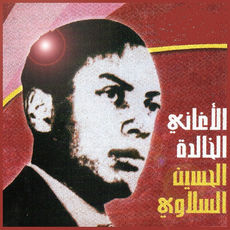In the Maghreb like in the Middle East, the first sound that you hear is often the call of the muezzin, who at the top of his tower, announces fives times a day, with many melismas, the time for prayer. There are muezzins gifted with great vocal qualities who make the experience fascinating, even for non-Muslims. The original muezzin is a companion of the prophet Muhammad, a freed slave of Ethiopian descent named Bilal al-Habashi, one of the first Islam converts. When he died at 62 years old, in 640 AD, his famously magnificent voice and his prominent role earned him the title of patron saint of the muezzins. His African origins made him the patron of the guild of the itinerant Black musicians, such as the Moroccan gnawas or the Tunisian stambali adepts.
Pre-Islamic voices and Arab-Andalusian splendor
The birth of singing in the Pre-Islamic era has been located in a Bedouin camp by Arab historians. The anecdote, which exists in many forms, says that a slave, wounded at the hand by falling from a camel or having been hit by his master, would have let out, because of the pain, a loud but melodious “ya yadah” (“oh, my hand!”). This cry would have pushed the camels to loudly manifest by marking, with their step, the first metric measure. Thus the hudâ would have been born, the caravan song, the first form of Arabic singing. Then came the nasb, the rudimentary chant from the young Bedouins and the music of the gaynet. These slave women coming from Persia or Ethiopia were courtesans, trained in the arts of poetry and music, and responsible for serving wine. Linked to the worldly pleasures, they are the ancestors of the cheikhat.
In the 8th century, the Arabs established a long-term settlement in the South of Spain and spread their culture. In 822, Ziryab, a master musician coming from Baghdad, arrives in Cordoba with some important musical innovations. He adds a fifth string to the lute and he has been attributed with the creation of the nubah, the main form of Arab-Andalusian music. This era, during which the Arab domination spreads on a territory called Al-Andalus, going up to the South of France, corresponds to a Golden Age. Muslims, Berbers, Jews and Catholics peacefully coexist, share and enrich their mutual cultures. When the Arabs are forced to retreat in 1492, this Eastern classical music assumes different names depending on the places where it continues its evolution: al-âla in Morocco, malouf in Tunisia, Libya and in Constantin, gharnati in Tlemcen, sana’ in Alger, wasla in Syria or maqam in Iraq.
Create a free account to keep reading










